DANCENOW presents Mark Dendy’s NEWYORKnewyork@Astor Place in Joe’s Pub.
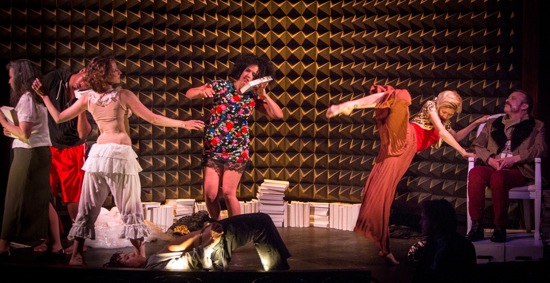
L to R: Alice Klugherz (exiting), Danté Brown (half hidden), Abigail Levine, Leslie Cuyjet, Mei Yamanaka, Mark Dendy, and (on floor) Christopher Bell in Dendy’s NEWYORKnewyork@Astor Place. Photo: Yi-Chun Wu
The very small stage at Joe’s Pub is bursting with people, and I’m not talking about the eight real performers. I mean the many others they personify and the many they refer to in the interpenetrating layers of Mark Dendy’s NEWYORKnewyork@Astor Place, a DANCENOW commission. Leslie Cuyjet, for example, appears as a real estate agent, herself, a can-can dancer, and a witch in Shakespeare’s Macbeth—and never any one of them for very long.
I admire Dendy for delving into New York history in this theater piece that he conceived, wrote, directed, and choreographed in collaboration with the other performers. Nor am I surprised how such topics as racial prejudice, homophobia, and the shockingly huge chasm between rich and poor swim between bygone New York and our present-day city. It can be difficult to assimilate all that Dendy is trying to give us in the space of an hour, especially in a place where we can eat and drink as well as take in the show. There are loose ends and surprising choices on his part, but the overall production is a zesty romp with a serious edge and a warm heart. You may get impatient with it, but you can’t help being both edified and vastly entertained.
Astor Place. We downtown Manhattan dwellers know the short street well. There used to be a Barnes and Noble bookstore on it, and Astor Place Wines and Spirits (now a block or so further south on Lafayette Street) stood at its corner to offer a different sort of browsing. Have you ever pondered the inset ceramic plaques (faience?) that appear at intervals in the tiles bordering the Astor Place subway station walls? The ones that show a dingy, cream-colored beaver on its hind legs, gnawing on a denuded tree? John Jacob Astor made his first fortune in the fur trade. That fortune enabled him to build the sumptuous Astor Place Opera House (late the Astor Place Theatre) on the corner where Lafayette and 8th Street now come closer together, and folks sip Starbucks’ lattes.
That theater came down a few years after the 1849 riot that ensued between partisans of the English actor William Charles Macready, who was opening in Macbeth at the Astor, and those of his rival, the American actor Edwin Forrest, who was offering his own Macbeth at the nearby Broadway Theatre. As Dendy well knows, the Astor Place Theatre’s audience was a toney crowd, while those who attended the Broadway Theatre tended to be more working-class sorts. The police came in on horseback with bayonets. People were wounded; people died.
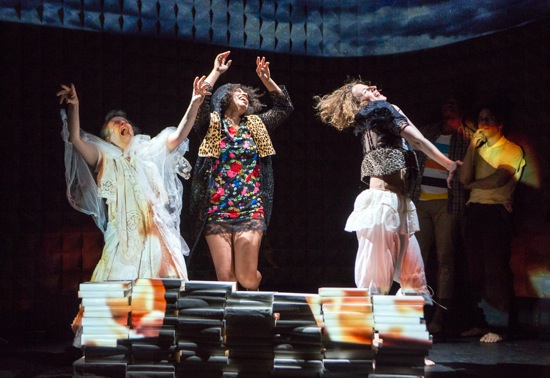
L to R: Alice Klugherz, Leslie Cuyjet, and Abigail Levine as Macbeth‘s Three Witches in Mark Dendy’s new work. Photo: Yi-Chun Wu
Dendy’s use of Macbeth involves the three witches (Cuyjet, Alice Klugherz, and Abigail Levine), ragged and haggish, who appear periodically to stir their cauldron of trouble and screech their “Double, double, toil and trouble.” Playng Macready, Stephen Donovan (also credited with video, sound, costume, and prop design) ventures part of Macbeth’s “Is this a dagger. . .?” speech.
Wearing a fur-collared overcoat and sitting on a tall chair at one corner of the stage, Dendy speaks to us as William Backhouse Astor II, the one of J.J. Astor’s grandsons who joined him in his business (the China Trade). It is he who gossips about the Astor family and tells us facts that we might not know. Pointing out the fat columns in the Pub, he summons up a vision of the Public Theater building (of which it is a part) as the onetime Astor Library. Astor père was instrumental in setting up the free research collection and left a bequest for its completion. W.B. Astor added an addition and also left money to the library in his will.
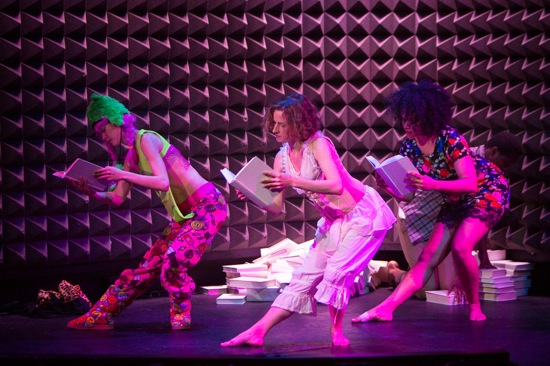
L to R: Mei Yamanaka, Abigail Levine, and Leslie Cuyjet in NEWYORKnewyork@Astor Place. Photo: Yi-Chun Wu
This explains why, while we’re still focuses on food and drink, Levine and Christopher Bell arrange the many white hardbound books that litter the stage—making neat stacks here, walls there. As they work, a recorded voice lists titles in no particular order. The list is an eclectic one. Dickens, Virginia Woolf, Grace Paley, Allen Ginsberg. . . . Mei Yamanaka enters dancing furiously, knocking them down with her scything legs and tumbling body. She’s billed as “Greek Chorus;” maybe, in this case, she’s foretelling the coming of the e-book. Later, however, Cuyjet talks of her own library and the pleasures of leafing through a book, rather than holding an electronic tablet, weight be damned. The library connection is further clarified by the versatile Klugherz in her appearances as Alice Broadbent, a decades-ago librarian at the Astor. She tells of a library page writing a very hot letter to her, slipped into a book.
When not otherwise engaged, or offstage changing costumes, the performers arrange the books or sit and read. They also dance with them. But Dendy brings other neighborhood strands together—some of them perhaps connected to his own life. And Lauren Parrish’s lighting can make the tiny stage’s shiny, textured back wall turn colors suited to a contemporary nightclub. Cuyjet’s charming can-can, with the requisite kicks, splits, and cartwheels (to music by Offenbach, of course) is a suitable music hall entertainment for a Gilded Age gent like W.B. Astor (did he really get a hand job under a napkin like the one that Cuyjet, looking bored, delivers?). We’ve jumped decades from the preceding sequence, in which Bell strips down to a glittery jockstrap, strikes muscle-man poses, and slides into a slow split, while video projections evoke the pre-AIDs years with images of men moving dreamily through a bathhouse.
To various of the extremely diverse musical selections (Naked City/John Zorn was responsible for seven of them), Dendy presents Levine as Mrs. Caroline Astor and Bell as her first husband in a steamy pas de deux. I think it’s to Zorn’s wild “Blood Duster” that Yamanaka, wearing gold pants and bathed in red light, dances furiously while Dendy tell us of an Asian woman, privy to crimes in the old Five Points district, who had her tongue cut out, to make sure she’d keep the gang’s secrets.
Danté Brown, wearing a hooded jacket, speaks and dances vividly as a former slave who made his way north via the Underground Railroad and became a dock worker. A goofy interview with Taylor Swift (a far cry from these actor-dancers and their word-perfect delivery) precedes a sequence to Lou Reed’s “Walk on the Wild Side.” I found the terrific performers’ concluding dance by with cell phones a little pat, but in this cornucopia of ideas and performances, many of which bring up the rocky relationship between art and money, excess isn’t all bad.
Donovan, who also plays a reporter and a downtrodden Irishman, provides additional historical commentary that spurred an online search on my part. The Astor Library’s material was moved to the New York Public Library at 42nd Street in 1911 (the NYPL had taken Astor’s building over some years before). In 1964, Joseph Papp persuaded the city to purchase what had become three grand attached structures for his Shakespeare Workshop (later Shakespeare in the Park). So, in that theater-stuffed landmark building, where the upstairs bar lounge is called The Library, Dendy’s Macbeth interludes are right at home. And to all contemporary power-usurping oligarchs who recall that tragic play: take those witches’ prophetic words to heart!

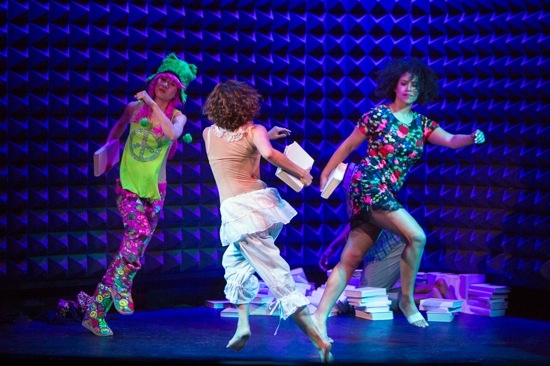
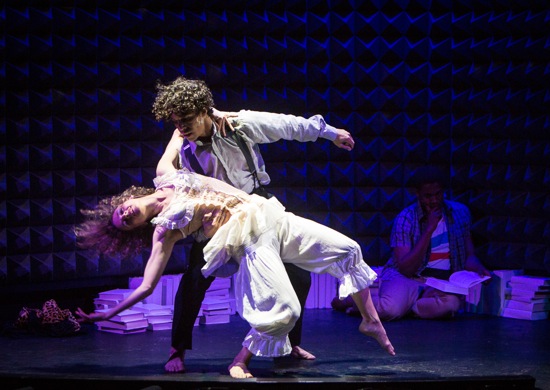
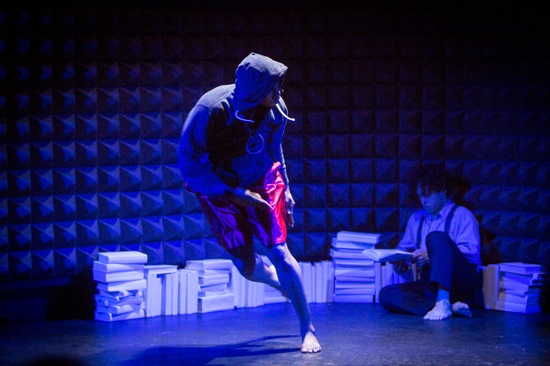
Deborah —
As always your beautiful writing, and thoughtful consideration, of this work is deeply appreciated.
Great to see you!
Robin